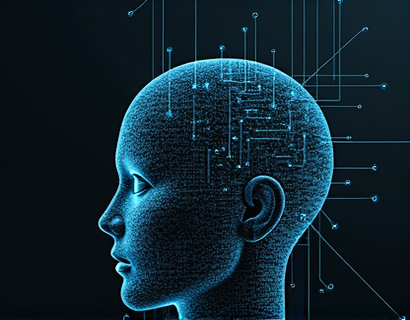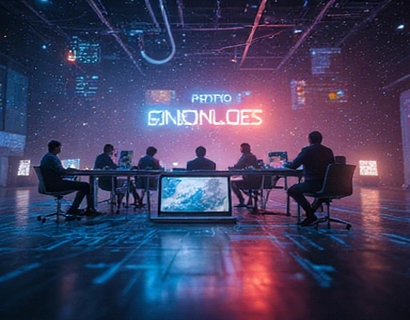AI-Powered Cosmic Learning: Interactive Exploration with Customizable Settings for Educators and Space Enthusiasts
In the realm of education and space exploration, the integration of artificial intelligence (AI) has opened new avenues for interactive and personalized learning experiences. This article delves into the concept of an AI-powered learning tool designed to make space and astronomy accessible, engaging, and customizable for both educators and space enthusiasts. By leveraging advanced AI technologies, this tool offers a unique platform for exploring the vast and intricate universe, tailored to individual interests and learning styles.
The core functionality of this AI-powered learning tool revolves around interactive explorations of celestial phenomena and astronomical concepts. Users can embark on a personalized cosmic journey, guided by an intelligent system that adapts to their knowledge level, preferences, and learning pace. This adaptive learning environment ensures that whether a user is a beginner or an advanced space enthusiast, they receive content that is both challenging and informative.
Customizable Learning Settings
One of the standout features of this AI-powered tool is its customizable settings. Users can adjust various parameters to tailor their learning experience. These settings include the depth of information, the type of content, and the pace of the exploration. For instance, a user can choose to focus on specific areas of astronomy, such as planetary science, astrophysics, or space exploration history. This flexibility allows educators to create customized lesson plans that align with their curriculum goals, while space enthusiasts can dive deep into topics that fascinate them the most.
The customization extends to the presentation of information as well. Users can select their preferred format, whether it's text, images, videos, or interactive simulations. This multi-modal approach caters to different learning preferences and enhances the overall educational value. For example, a visual learner might benefit from detailed images and 3D models of celestial bodies, while an auditory learner can opt for narrated explanations and audio clips of space-related sounds.
Interactive Explorations
Interactive explorations are at the heart of this AI-powered learning tool. Users can engage with virtual models of the solar system, galaxies, and other cosmic structures. These interactive models allow users to manipulate variables, observe changes, and gain a deeper understanding of complex astronomical concepts. For instance, users can adjust the orbit of planets, witness solar eclipses, or explore the surface of Mars in virtual reality.
These interactive features are not only educational but also highly engaging. The ability to manipulate and explore celestial bodies in a virtual environment fosters a sense of discovery and curiosity. Educators can use these interactive tools to create immersive classroom experiences, making abstract concepts more tangible and relatable. Space enthusiasts can use these features to satisfy their curiosity and deepen their knowledge in a fun and interactive way.
Personalized Learning Paths
The AI-powered learning tool goes beyond static content by creating personalized learning paths for each user. Based on initial assessments and ongoing interactions, the system identifies knowledge gaps and areas of interest. It then curates a tailored sequence of lessons and activities to help users progress at their own pace. This personalized approach ensures that learners are consistently challenged and engaged, preventing boredom and fostering a deeper understanding of the subject matter.
For educators, this feature is particularly valuable as it saves time in lesson planning and allows for differentiated instruction. The tool can generate reports on each user's progress, highlighting strengths and areas for improvement. Educators can use these insights to provide targeted support and enrichment activities, enhancing the overall learning experience in the classroom.
AI-Driven Content Generation
Another innovative aspect of this learning tool is its AI-driven content generation. The system can produce a wide range of educational materials, from detailed explanations of astronomical phenomena to interactive quizzes and puzzles. This dynamic content creation ensures that the learning experience remains fresh and up-to-date, reflecting the latest discoveries and research in the field of astronomy.
The AI can also generate content based on user interactions, providing real-time explanations and answers to questions. This immediate feedback loop enhances the learning process, allowing users to quickly grasp complex concepts and build on their knowledge. For educators, the AI-generated content can serve as a valuable resource for creating supplementary materials, such as lesson plans and study guides.
Collaborative Learning Features
Collaboration is a key component of effective learning, and this AI-powered tool supports collaborative learning through various features. Users can join virtual study groups, participate in discussions, and work on group projects within the platform. The AI facilitates these interactions by providing structured discussion prompts, moderating conversations, and offering collaborative tools such as shared whiteboards and document editing.
For educators, these collaborative features enable them to foster a sense of community and peer learning in their classrooms. Students can engage in group activities, share insights, and learn from one another, enhancing their understanding and retention of the material. Space enthusiasts can also join communities of like-minded individuals to exchange knowledge and explore the universe together.
Accessibility and Inclusivity
Accessibility and inclusivity are fundamental principles in the design of this AI-powered learning tool. The platform is designed to be user-friendly and accessible to individuals with diverse abilities and backgrounds. Features such as text-to-speech, adjustable font sizes, and high-contrast modes ensure that users with visual impairments can fully participate in the learning experience.
Additionally, the tool supports multiple languages, making it accessible to a global audience. This inclusivity is crucial for spreading the joy of space exploration and astronomy to a wider audience, breaking down barriers and fostering a more diverse and inclusive community of learners.
Continuous Learning and Updates
The AI-powered learning tool is not a static resource but a continuously evolving platform. It incorporates real-time data from space missions, recent discoveries, and ongoing research to keep the content current and relevant. This ensures that users always have access to the most up-to-date information in the field of astronomy.
Moreover, the AI system learns from user interactions and feedback, continuously improving its algorithms and content delivery. This self-improving nature means that the tool becomes more effective and user-friendly over time, providing an ever-enhancing learning experience for all users.
Conclusion
In conclusion, an AI-powered learning tool that offers interactive explorations and customizable settings represents a significant advancement in space education and astronomy. By providing personalized, engaging, and accessible content, this tool empowers educators and space enthusiasts to explore the universe in new and exciting ways. Whether used in a classroom setting or for personal enrichment, this tool has the potential to inspire a new generation of space explorers and deepen our collective understanding of the cosmos.










































